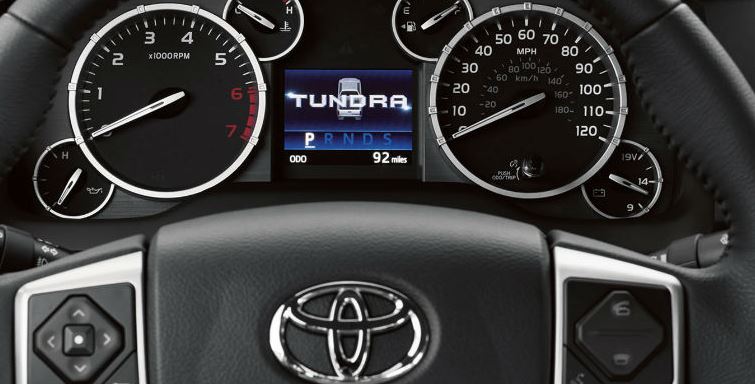Are you wondering is it is ok if you can drive on a flat tire? Maybe you noticed the tire pressure light Toyota.
In this post, I will show you how to fix low tire pressure and even give you an easy step for Toyota tire pressure sensor reset which will come in handy when your car tire pressure light is still on after filling tires.
There are various factors that could lead to low tire pressure. Noticing that your tires have low pressure can cause a bit of worry.
Although it is not an immediate sign of danger, you need to get it fixed as fast as possible so that it does not lead to more damage. One of the most common things that cause low tire pressure is the drop in temperature.
You might leave your tire in good condition the previous night but wake up to find out that the pressure has dropped.
This might be that the temperature had probably dropped overnight. Cold weather can cause tires to lose pressure. The air inside them will expand and contrast and this may lead to low tire pressure.
Related Article:
- What is the Recommended Tire Pressure for 51 PSI Max?
- What Should the High and Low Side Pressures be For r12
- What Is The Best Tire Pressure For Highway Driving? (Is 45 Psi Too Much Air)
- How Far Can You Drive on a Flat Tire? (Can I Drive on a Flat Tire)
How to Fix Low Tire Pressure (Tire Pressure Light Toyota)
So here are some of the areas we will look into in this post:
- what causes low tire pressure
- What to do if: tire pressure light still on after filling tires
- Why is my tire pressure light on when my tires are fine?
- toyota tire pressure sensor reset
- tire pressure light Toyota
- tire pressure light still on after filling tires
- can you drive on a flat tire
When a vehicle has the right amount of tire pressure, it enables it performs effectively and efficiently.
With the optimum tire pressure, the car will remain balanced, gas mileage is economical, and cornering is easier and safe.
When you ride with low tire pressure, you risk damaging the tires, while driving and also making your experience dangerous.
If you notice that your tires are lower than it usually is, then it is possible you have low pressure. When driving, the tire will hit the ground.
This often causes more damage and unusually burns off fuel. An underinflated car can lead to overheating, bending the sides of the tire which may cause it to blow out.
How often should I check the tires?
As a driver, you need to make sure your vehicle is in the right condition before you take it out every morning.
With the tires of the car, you need to regularly check them to know whether their pressure is too much or too low.
You should check the tire pressure of your car at least once every 30 days. Before you do so, you need to make sure they are cold in order to get an accurate reading.
What this means is that, before you check, the car must have to be in a state of rest under shade for some hours.
You can also check early in the morning after parking it overnight. This will ensure you get the right and adequate reading. So, check your tire’s air pressure monthly.
What causes low tire pressure?
There are several factors that could lead to low tire air pressure. Some of them are as follows:
- First, you might have a puncture in the tread of the tires which is causing it to lead air. If a nail is stuck in any part of your tires, you can lose about 3 PSI daily. This can occur if you mistakenly pick up a nail when driving.
- Another cause of low tire pressure is when your valve stem and core is leaking. This can happen if you tighten the core too much. Every tire valve core has a specification of 4 inches per pound of torque.
- Osmosis of tire can also lead to deflation. This is a process whereby air continues to pass through the tires over a long period of time. Depending on the model of the tire, it might lose about 3 PSI of pressure every month. Osmosis has greater effects during warm weather. If it is not fixed fast, it might lead to a blowout.
- When you hit curbs on those wrong turns or ride over large objects, it can lead to loss of tire air pressure. This is usually sudden and may have a faster effect than others.
What to do if tire pressure light still on after filling tires
The first thing you need to do is to look for the reset button. It is normally located inside the car’s glove box.
The glove box is the compartment positioned in front of the passenger’s seat. If you are having trouble locating it, you need to check the owner’s manual.
After finding it, press the reset button for a few seconds. The dashboard light will blink three times signaling that the TPMS has been reset.
Now, turn off the car engine and restart again after 6 seconds. This should resolve the problem.
N.B: However, resetting the TPMS might vary, based on the model of your car. You can check the manual just to be sure.
Why is my tire pressure light on when my tires are fine?
There are so many reasons why your low-pressure light will remain on even when your tires are fine. The obvious reason is that the Tire Pressure Measuring System is faulty.
The TPMS might be faulty and need to be repaired. If you have just replaced your tires, then the system might have been damaged mistakenly since it is usually located at the rim of the tire. Another thing that can cause this is when the weather is extremely cold.
Tire pressure usually decreases during the cold season, no matter how inflated it might be. The reason for this is not far-fetched.
During cold weather, heat expands, while matter compresses. If this is the reason, what you have to do is warm up the tires for some time and the light will go off.
However, before you jump to conclusions on this, be certain the tires are truly fine.
Toyota tire pressure sensor reset
To reset your Toyota tire pressure sensor, you can do the following
- Put your key in the ignition and then switch to the “On” position without starting the car. The tire pressure sensor is usually positioned under the steering wheel, locate it and press. As soon as you notice that the tire pressure light located on the dashboard flashes three times, it has been reset. It might take about 20 minutes before it resets.
- Drive at a speed of about 50mph or higher for some minutes. This might provoke the pressure sensor and the TPMS will restart when next your start your Toyotas engine.
- Another way to inflate the tires about 3 PSI above what is stated in the manual. After doing this, deflate it completely. If there is a spare tire, deflate it too. Once you have done this, reinflate them back to its optimum PSI.
- Lastly, turn off your car and then remove the positive battery cable. Turn the car back on and then for the next 3 seconds, hold the horn down. This should drain whatever power remaining in the car. Once you have done that, the power in the car should get exhausted. Then reconnect the battery.
Conclusion This post explained some of the reasons why your tire is fine but the low-pressure light remains on. However, after taking all the steps mentioned above and the problem still persists, then you may need the help of professionals.
What to read next: Meaning Of “Check VSC System Toyota” Light For Toyota & Lexus
Hi dear, I am Gift Dennis I have been working as a Radiographer for over 8 years, but I switch my profession to what I love which is auto body part repairs and I recently got my automotive diploma last August 2020 as an auto-body repair technician. I love fitness and everything about cars, so here is where I share my expertise and experiences with those who wish to hear about them.


